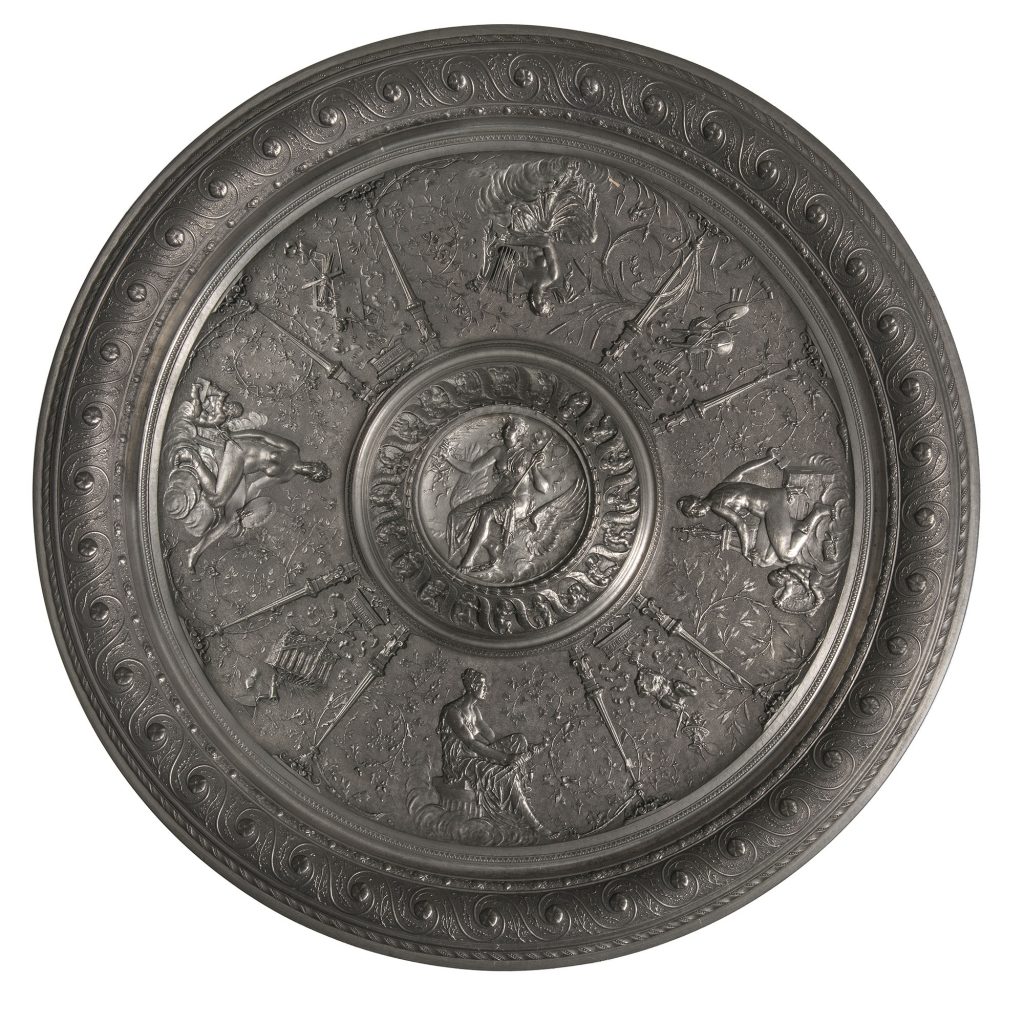
Jules Brateau. Contremarques
08/08/2023Les arts Buire et son plat à l’ombilic.

Photographie Musée des Arts Décoratifs. Paris
Historique :
A l’origine l’aiguière et son plateau « Les arts » fut un model créé entre 1887 – 1889 par Jules Brateau.
Cet ensemble devint l’un des lots phare de l’exposition universelle de 1889 et fut réédité lors de la vie de l’artiste. Les N° de rééditions devraient être insculpés sur le tertre de la muse de la sculpture.
Contremarques :
Le contre poinçon au gibet* est utilisé dans toutes les éditions du vivant de l’artiste ainsi que dans les rééditions de Chaumette (avant 1950).
(*Le symbole du pendu fait référence aux initiales de l’artiste JB.)
Brateau fut formé chez Honoré puis travailla pour Boucheron, Falize ou Vever . Cet artiste issu du milieu de la bijouterie orfèvrerie en repris les codes, cela explique aussi le nombre de contremarques existantes sur ses œuvres à des endroits prévu toujours identiques.
Evolution des rééditions posthumes:
Dans la monographie sur « Jules Brateau 1844-1923 » écrite par Jean Christophe Boucaud ( isbn 2-9520594-1-1) un passage P33 reprend l’historique des poinçons et contremarques « Les moules passent chez Gras et Etienne dans les années 60 où cette fabrique appose à côté du poinçon cartouche, son poinçon à la rose couronnée et la mention « étain d’art – titre légal. » » La reprise de Gras et Etienne dans les années 70 donnera lieu à un changement d’insculpation. Il est intéressant de regarder la différence de traitement du verso des pièces dans la subtilité de la finition.
La qualité d’authenticité de ces œuvres achetées est bien sur déterminante dans la décision d’achat.
Les pièces pouvant être décrites comme étant de Jules Paul Brateau (1844-1923) et signées sous la base ne sont pas des pièces authentiques de l’artiste mais de très beaux fac similés ultérieurs, des fontes posthumes.

